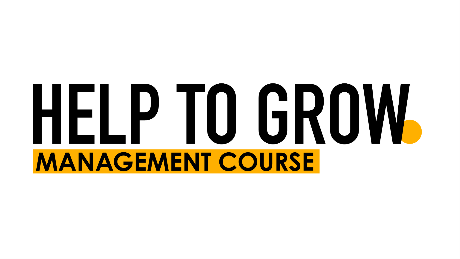

Wed 12 / 04 / 23
How to harness agility to grow your business
To win in this challenging time, business leaders need to review how they operate and find requisite agility - not just agility. Course leader at Help to Grow, David L Francis PhD from the University of Brighton, gives us some pointers
By David L Francis PhD of University of Brighton
Every year, the consulting group McKinsey’s conduct a CEO Excellence Survey. It asks top-performing CEOs to define the trends that are reshaping their priorities. This year, they identified disruptive technologies as the key change driver in their businesses. Other factors included: automating work, using advanced analytics, becoming lean, reducing carbon emissions, developing resilient supply chains and responding effectively to threats.
Clearly CEOs have a daunting to-do list and one that not only concerns large corporations. Those who lead smaller businesses face a rapidly changing landscape of threats and opportunities, as well as the enduring challenge of running a well-managed business.
Today’s companies and not-for-profit enterprises are not the first to experience a range of change drivers. Technological revolutions, economic shocks and changing patterns of competition have occurred many times. We have learnt important lessons from studies of those enterprises that survived, and those that failed, during turbulent times.
Here are some of the key lessons and takeaways from those studies, for leaders and managers.
Dynamic capabilities
This is everything that is required to move an enterprise forward in ways that keep it best-in-class – leadership, strategy, top teamwork, assets, focus, data, organisational adaptiveness and proactivity. The need for dynamic capabilities varies depending on the industry a business operates in. A window cleaning company needs a lower level of dynamic capabilities than say, a video game maker (at least until robotic window cleaning becomes mainstream!)
Efficiency and effectiveness
These are essential because an enterprise that is not truly competitive rarely possesses the resources, organisational competence and can-do spirit that’s needed to thrive in a changing world. No organisation can ever claim that “we are best” as efficiency and effectiveness are moving targets.
Don’t panic
A vital mindset! Adverse situations need cool heads to undertake outward-looking fact-finding, insightful analysis, a willingness to unlearn and to undertake what the great economist Joseph Schumpeter described as ‘Creative Destruction’. Often there will be unexplored ways to mitigate threats and grasp opportunities, as many enterprises found during the Covid epidemic. Wise leaders transform panic into urgency.
Requisite agility
This is the capability to create or seize multiple do-better and do-different opportunities to ‘win’ and be fit-for-purpose, while strengthening the organisation. Why is requisite agility important? There are four key reasons.
First, being agile is not a cost-free organisational asset. It requires organisations to become entrepreneurial, which can undermine an organisation’s economic model. Consider, for example, economies of scale. In many industries costs reduce as production increases. Choosing to give away economic advantages such as these is a decision with lots of consequences.
Second, there are different types of agility and using the wrong type will be dysfunctional. Eight agility types have been identified and each has distinctive strengths and weaknesses.
The eight types are:
- Top Down - agility by central direction
- Routines-Based – agility by pre-planning for contingencies
- Project-Based – agility using project management techniques
- Socio-Technical – agility combining people, systems and machines
- Skunkworks – agility from innovative teams
- Intrapreneural – agility from internal entrepreneurship
- Granular – agility from empowered teams
- Networked – agility from combinations of organisations.
Third, agility requires high level skills that are expensive to acquire. This is because agile organisations must do more than scan for promising ideas. They need to have packs of skilled hunters who are resilient and persistent, have heightened senses, possess powerful problem-solving skills and select opportunities prudently.
Fourth, agile initiatives can be hard to control. Entrepreneurial initiatives may be undertaken autonomously in different parts of an organisation. Unwise decisions and costly commitments can occur and much managerial time will need to be invested in damage limitation.
We see that the real managerial challenge is not ‘to become agile’, but to find ways to exploit agility for advantage, thereby enabling an enterprise to become requisitely agile.

Help to Grow is an MBA style management programme, designed to help leaders and senior managers of small and medium-sized business to help you focus on ways to develop your business’ growth and productivity with a goal of strengthening your future. Find out more about Help to Grow here.
If you want to contribute to the Chamber blog, contact us on hannah@brightonchamber.co.uk



